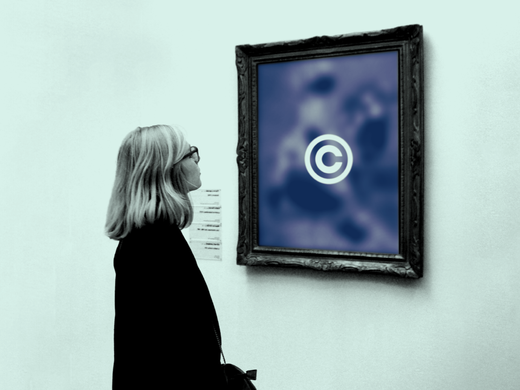In a recent Globe and Mail feature, “Canada Can Innovate But We’re Not Equipped to Win,” Jim Balsillie noted that Canada’s recently enacted Copyright Modernization Act (2012) was “created in response to US government and corporate interests working in a sophisticated fashion to advance American interests at the expense of other countries, including our own” (Balsillie 2015). Without a strong domestic innovation lobby, he argued, “Canadian politicians are inadvertently legislating in American interests” (ibid.). While the Copyright Modernization Act has been touted as “Canada-made” — and it does have some uniquely “Canadian” provisions — it is ultimately a statute that was managed and conditioned by jurisdictions beyond Canadian borders — chief among them, the United States.
Since the 1990s, the United States has transformed the international copyright system. The imposition of strengthened copyright through international agreements, whether within the international trade agenda or through the international copyright system itself, has become the norm. These rules favour strong producers and exporters of copyright works. Since Canada has always been and remains a net importer of copyright material, it is legitimate to ask why it continues to adhere to international treaties that require more outflow of revenue to foreign copyright holders. We can find the answers by looking to external pressure.
Beyond the major revisions of the Copyright Modernization Act, the Canadian Parliament continues to increase the rights of copyright holders. Embedded in budget legislation brought into force this past June, the term of copyright protection for sound recordings was increased by 20 years (from life plus 50 years to life plus 70 years). It seems only a matter of time before the Copyright Act will be further amended to provide the same extension to all forms of copyright works. This will bring Canadian law in line with those of the United States and the European Union — the two major producers and exporters of copyright works worldwide — and align its copyright law in anticipation of new international obligations (such as the proposed Trans-Pacific Partnership Agreement). So who, exactly, is defining Canada’s international copyright policy?
Unfortunately, foreign influence on Canadian copyright law is not a new story. It has been the Canadian copyright narrative throughout history. There has never been a sufficiently vocal and strong “innovation lobby” to resist these incursions from outside interests.
In 1993, A. A. (Frank) Keyes, a senior federal bureaucrat with extensive international copyright experience, published an article titled “What Is Canada’s International Copyright Policy?” in which he questioned the wisdom of Canada acceding to the 1971 Paris Text of the Berne Convention for the Protection of Artistic and Literary Works in anticipation of Canada joining NAFTA and the WTO/TRIPS. Seeking to understand Canada’s adherence to greater international copyright obligations, he remarked that, “[w]hile it is manifest that the interests of Canada lie in minimizing the outflow of copyright royalties and maximizing inflow, the lack of an expressed policy could mean that copyright legislation is being used to pursue other equally undisclosed policy goals. It is significant that in all this the United States plays a dominant, if not always visible, role” (Keyes 1993, 306).
In more than 180 years of Canadian copyright history, there was only one brief moment when Canada was left to its own devices and this was, ironically, prior to Confederation — in colonial British North America. Lower Canada (Quebec) enacted its first copyright act in 1832, when colonial printing and publishing were of little concern to British interests. Nova Scotia followed in 1839. Upper Canada (Ontario) legislated on copyright in 1841 as a result of its union with Lower Canada. Because the British North American market was small, with few local authors and only a handful of printers, the colonies did not attract attention from the outside. As a result, although colonial copyright legislation was certainly influenced by models drawn from other jurisdictions — most notably the United States — the legislative choices were entirely domestically driven and deliberately designed to support local economic and socio-cultural objectives. This halcyon period did not last long.
Once the American book reprinting market accelerated and expanded into British North America, severely undercutting the market for expensive British imports, the Imperial authorities struck back in the form of the 1842 Imperial Copyright Act. The statute forbade the importation into the colonies of cheap American reprints and prohibited British North American publishers from reprinting British works without permission. Following entreaties from the colonies about the harsh impact of this legislation on the advancement of learning, the British compromised. The Foreign Reprints Act reinstated the flow of unauthorized American reprints into Canada, as long as a duty was collected at the Canadian border and remitted to British copyright holders; under the same arrangement, Canadian publishers were barred from supplying the Canadian market. From that point forward, Canadian publishing and Canadian cultural and economic interests were subsumed to those of the British and the Americans. Britain’s overriding concerns were to ensure that its publishing industry maintained its monopoly over the Canadian market and to successfully negotiate a bilateral treaty with the United States to curb unauthorized reprints of British works. In 1872, an attempt by the Canadian Parliament to introduce a compulsory licensing provision to allow Canadian publishers to reprint British books and pay British copyright holders the same duty as was being collected on American imports was denied royal assent.
In 1886, the United Kingdom signed the Berne Convention on its own behalf as well as on behalf of its colonies and possessions. Canada therefore became a member only by dint of its colonial status. Although the Canadian Parliament attempted to formally denounce the treaty in 1889 and debated withdrawing from the Convention in 1921, Canada has nevertheless remained. In both instances, Canada sought to include provisions in its Copyright Act for compulsory licensing for reprinting books if foreign copyright holders did not themselves make an affordable copy available in Canada. Canadian interests lay in developing a strong domestic publishing industry, encouraging learning and literacy through the availability of books and fostering a national cultural identity by providing a vehicle for the dissemination of Canadian works. Compulsory licensing would serve to achieve these interrelated policy objectives. In 1889, the attempt at denunciation of Berne was rejected by the British Parliament and the Canadian legislation that incorporated the compulsory license was, like its predecessor in 1872, denied royal assent. As nineteenth-century copyright commentator Richard Lancefield remarked, “The interests of Canada, so far as copyright is concerned, have been cruelly sacrificed for the last fifty years” (1896).
In 1921, doubts within the Canadian legislature over whether compulsory licensing would be consistent with Berne, and fears about the consequences of withdrawing from the treaty, resulted in the compulsory licensing provision being dropped from the Copyright Bill. Attempts by Canada to challenge the international status quo or to push the international copyright envelope to suit its own interests were never seriously pursued. Instead, Canada dutifully followed the lead of others and continues to tie itself even more inextricably to the international copyright framework.
The geopolitics of nineteenth- and early twentieth-century transatlantic copyright offer a lens through which to understand that foreign interests — especially American and British — have always played a defining role in Canada’s copyright history. The current international context may be more sophisticated, and copyright legislation may have become increasingly more complex, but it doesn’t take much digging into Canada’s past to recognize a pattern. It is to be hoped that Canadian economic interests are being served in other respects, that the trade-off on copyright — because that is what it is — is ultimately worthwhile. The answers aren’t at all clear. It is no wonder that the question continues to resound: What exactly is Canada’s international copyright policy?
Works Cited
Balsillie, Jim. 2015. “Canada Can Innovate But We’re Not Equipped to Win.” The Globe and Mail, May 9. www.theglobeandmail.com/report-on-business/rob-commentary/balsillie-learns-canadian-innovators-not-equipped-for-global-competition/article24346408/.
Keyes, A. A. 1993. “What Is Canada’s International Copyright Policy?” Intellectual Property Journal 7: 299–319.
Lancefield, Richard. 1896. Notes on Copyright: Domestic and International. Hamilton, ON: Canadian Literary Bureau.


